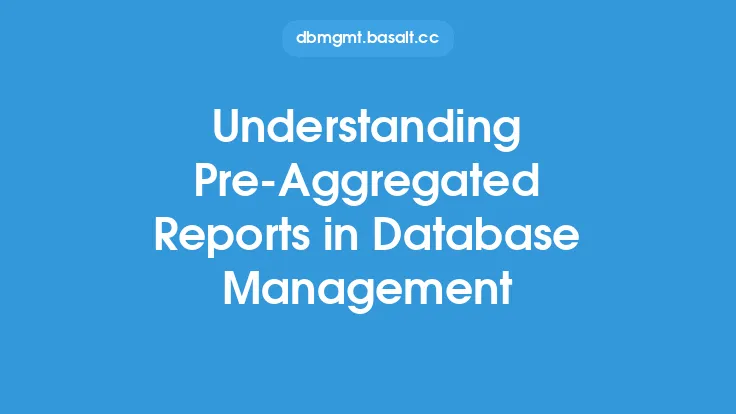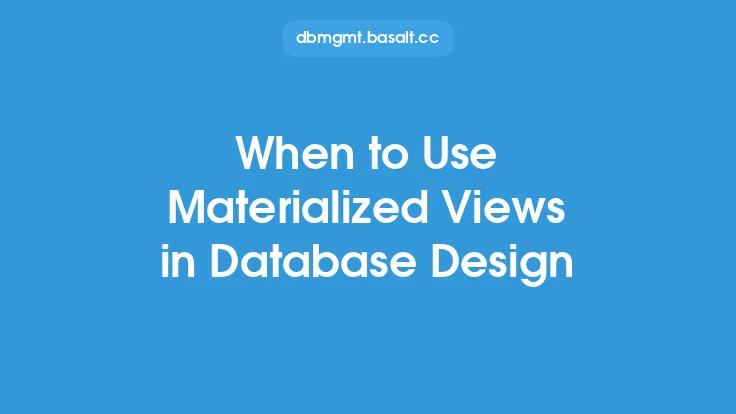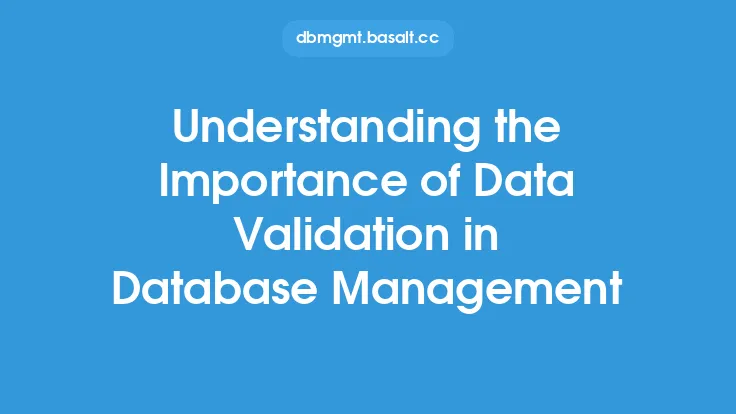In the realm of database management, data denormalization is a technique used to improve the performance of databases by reducing the number of joins required to retrieve data. One of the key concepts in data denormalization is materialized views, which are database objects that store the result of a query in a physical table. This allows for faster query execution, as the data is pre-computed and stored, rather than being computed on the fly.
Introduction to Materialized Views
Materialized views are similar to traditional views, but with a key difference. Traditional views are virtual tables that are based on the result of a query, but they do not store the data themselves. Instead, they compute the result of the query every time the view is queried. Materialized views, on the other hand, store the result of the query in a physical table, which can be updated periodically or in real-time. This allows for faster query execution, as the data is pre-computed and stored, rather than being computed on the fly.
How Materialized Views Work
Materialized views work by storing the result of a query in a physical table. This table is updated periodically or in real-time, depending on the configuration of the materialized view. When a query is executed against the materialized view, the database can simply return the pre-computed result, rather than having to compute it on the fly. This can significantly improve query performance, especially for complex queries that involve multiple joins or subqueries.
Types of Materialized Views
There are several types of materialized views, including:
- Simple materialized views: These are the most basic type of materialized view, and they store the result of a single query.
- Complex materialized views: These materialized views store the result of multiple queries, and they can be used to compute aggregate values or to perform data transformations.
- Partitioned materialized views: These materialized views are divided into smaller partitions, each of which stores a portion of the data. This can improve query performance by allowing the database to only access the partitions that are relevant to the query.
- Indexed materialized views: These materialized views have indexes created on them, which can improve query performance by allowing the database to quickly locate specific data.
Benefits of Materialized Views
Materialized views offer several benefits, including:
- Improved query performance: By storing the result of a query in a physical table, materialized views can significantly improve query performance.
- Reduced load on the database: By pre-computing the result of a query, materialized views can reduce the load on the database, which can improve overall system performance.
- Simplified data analysis: Materialized views can simplify data analysis by providing a pre-computed result that can be easily queried.
- Improved data consistency: Materialized views can improve data consistency by providing a single, authoritative source of data.
Challenges and Limitations of Materialized Views
While materialized views offer several benefits, they also have some challenges and limitations, including:
- Data freshness: Materialized views can become stale if the underlying data changes, which can lead to inaccurate results.
- Storage requirements: Materialized views require additional storage space, which can be a challenge for large datasets.
- Maintenance overhead: Materialized views require periodic maintenance to ensure that they remain up-to-date and accurate.
- Complexity: Materialized views can be complex to set up and manage, especially for large datasets.
Use Cases for Materialized Views
Materialized views are useful in a variety of scenarios, including:
- Data warehousing: Materialized views are often used in data warehousing to improve query performance and simplify data analysis.
- Business intelligence: Materialized views are used in business intelligence to provide pre-computed results that can be easily queried.
- Real-time analytics: Materialized views are used in real-time analytics to provide fast and accurate results.
- Data integration: Materialized views are used in data integration to provide a single, authoritative source of data.
Best Practices for Working with Materialized Views
To get the most out of materialized views, it's essential to follow best practices, including:
- Carefully design the materialized view: The materialized view should be carefully designed to ensure that it meets the requirements of the application.
- Choose the right type of materialized view: The type of materialized view should be chosen based on the requirements of the application.
- Monitor and maintain the materialized view: The materialized view should be regularly monitored and maintained to ensure that it remains up-to-date and accurate.
- Optimize the materialized view: The materialized view should be optimized to improve query performance and reduce storage requirements.
Conclusion
Materialized views are a powerful tool in database management, offering improved query performance, reduced load on the database, and simplified data analysis. While they have some challenges and limitations, they are a valuable addition to any database management system. By understanding how materialized views work, their benefits and challenges, and best practices for working with them, database administrators and developers can use materialized views to improve the performance and efficiency of their databases.





